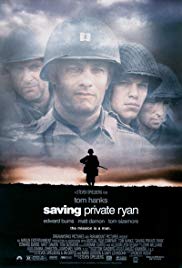In 1942, General Dwight Eisenhower, Supreme Allied Commander in Europe, wrote that Germany should, “beware the fury of an aroused democracy.” On D-Day, June 6, 1944, the Allies mounted the largest amphibious assault in history and opened a third front in Europe. The invasion force consisted of more than 5,000 ships, 1,200 warships, and 13,000 airplanes. Some 90,000 U.S., British, Canadian, and Free French troops landed on the beaches of Normandy, while about 20,000 more came by parachute or glider. More than a million men followed in the succeeding weeks. The invasion had been in preparation for a year.
Casualties turned out to be less than expected except at Omaha Beach, where strong German resistance and difficult seas resulted in about 2,000 U.S. casualties. By June 11, 1944, the Allied forces had linked up and made a solid front.
The success of the Normandy invasion was crucial to the Allies. By the same token, defeating the invasion was vitally important to the Germans. Hitler is reported to have said: “The destruction of the enemy’s landing is the sole decisive factor in the whole conduct of the war and hence in its final results.” But the Germans couldn’t stop the invasion. In 1943, they were fighting the Americans and British in Italy and the Mediterranean as well as the Russians in the East. The Atlantic Coastline from Holland to France was 6,000 kilometers. It could not be watched in all places. In short, the Germans were overextended.
The Allies, backed by the tremendous productive power of the U.S. and the men of the American and British armies, were not to be denied. Historian Doris Kearns Goodwin wrote:
Three weeks after D-day, one million men had been put ashore, along with an astonishing supply of 171,532 vehicles and 566,000 tons of supplies. “As far as you could see in every direction the ocean was infested with ships,” Ernie Pyle [the great WWII war correspondent] observed, but when you walked along the beach, a grimmer picture emerged. “The wreckage was vast and startling.” Men were floating in the water, lying on the beach; nearly nine thousand were dead. “There were trucks tipped half over and swamped … tanks that had only just made the beach before being knocked out … jeeps that had burned to a dull gray … boats stacked on top of each other. On the beach lay expended sufficient men and mechanism for a small war. They were gone forever now.” No Ordinary Time by Doris Kearns Goodwin, 1994, Simon & Schuster, New York, page 511, quoting from Pyle, Brave Men pp. 358, & 367 – 69.
Mr. Pyle was amazed that the Allies could afford these losses, but he realized that behind the men, the vehicles and the ships, were still more in preparation to overwhelm Germany.


